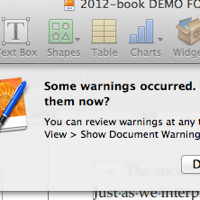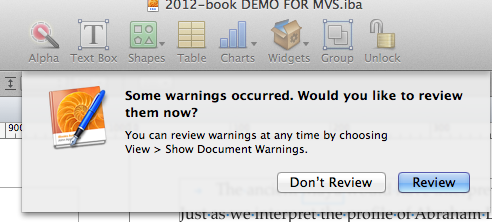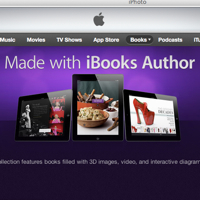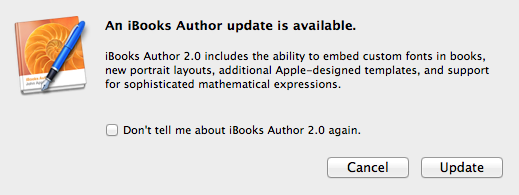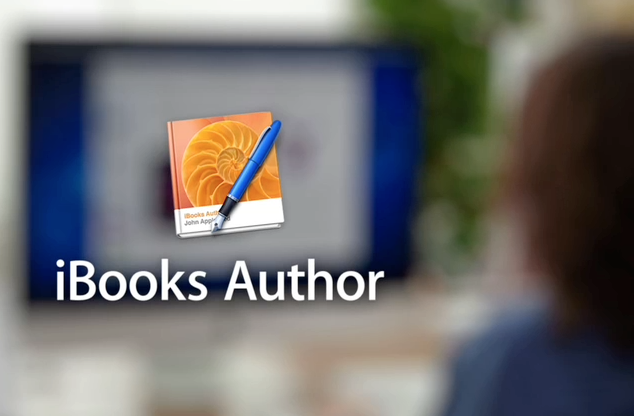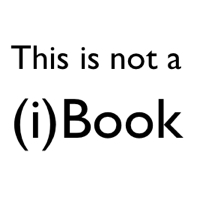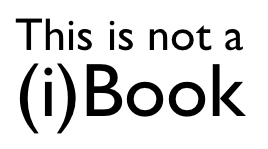Note: Since I first publishing this post, I took the leap and updated to iBA 2.0. (Of course, I had to because iTunes only accepts new books created in iBA 2.) I published three books in the new software and was also able to successfully open iBA 1.0 files in 2.0 and even copy widgets and other content from 1.0 to 2.0.
I still haven’t upgraded to iBooks Author 2.0, so I cannot verify any of these claims. But this information adds to my prior posts detailing issues with iBA 2.0.
First an excerpt (and image above) from What Apple Didn’t Say About Changes From iBooks Author Version 1 Series by Claxton Creative.
When we opened our .iba file made from the version 1.0 series (It was last opened on Aug. 23, 2012) in version 2.0 on Nov. 24, 2012, we immediately got a flag warning from the software saying that the image on page 156 was too large. Thumbing through the book also showed that iBooks Author 2.0 had messed up multiple widgets we’d laid out perfectly in version 1.0. They were compressed into a tiny size and were sitting at the left sides of pages. Several of them we’d laid out to encompass an entire page. Version 2.0 messed all that up and required us to repaginate several places in the book.
… A dialogue box appeared and said an image that worked fine up until Oct. 23, 2012, was no longer any good in our book for iPad.
… Things got even wonkier after that. There were multiple widgets in the book that got totally screwed up by iBooks Author version 2.0. …. some of them got zapped in size and then moved to the top left portion of a page, completely affecting the pagination within a chapter. More
Next some chatter from the Apple Support Community boards:
MrBlobby1970 begins a discussion about problems with iBA 2.0 by writing ….
Upgraded to iBooks Author 2.0 and it has rendered my book file unusable. Is there a way to download iBooks Author 1.0/1.1 after you have upgraded to 2.0?
I have tried the book file with a friend’s iBooks Author 1.1 and it still works, so it’s something with 2.0 that just doesn’t like my files. More
In another Apple Support discussion Patrick-betterthanworksheets writes
Updated iBooks Author to 2.0 but can’t seem to load the iBook I was perviously working on (says cannot load document). Still loads fine on my other Mac using the pervious version of iBooks. Happen to anyone else or is this just a glitch with my file? Not a huge deal since I can use the pervious version to finish it off but just wondering. More
OK readers, its your turn – Is anyone else having compatibilty issues with iBA 2.0 and 1.0?
